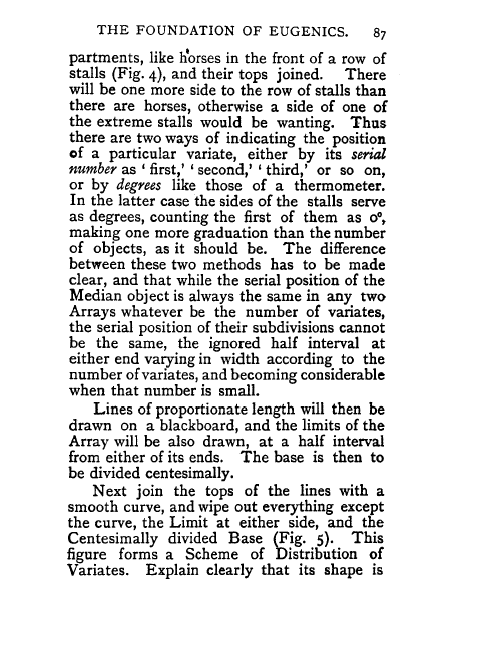THE FOUNDATION OF EUGENICS. 87
partments, like horses in the front of a row of stalls (Fig. 4), and their tops joined. There will be one more side to the row of stalls than there are horses, otherwise a side of one of the extreme stalls would be wanting. Thus there are two ways of indicating the position of a particular variate, either by its serial number as ' first,' ' second,' ' third,' or so on, or by degrees like those of a thermometer. In the latter case the sides of the stalls serve as degrees, counting the first of them as o°, making one more graduation than the number of objects, as it should be. The difference between these two methods has to be made clear, and that while the serial position of the Median object is always the same in any two Arrays whatever be the number of variates, the serial position of their subdivisions cannot be the same, the ignored half interval at either end varying in width according to the number of variates, and becoming considerable when that number is small.
Lines of proportionate length will then be drawn on a blackboard, and the limits of the Array will be also drawn, at a half interval from either of its ends. The base is then to be divided centesimally.
Next join the tops of the lines with a smooth curve, and wipe out everything except the curve, the Limit at either side, and the Centesimally divided Base (Fig. 5). This figure forms a Scheme of Distribution of Variates. Explain clearly that its shape is

